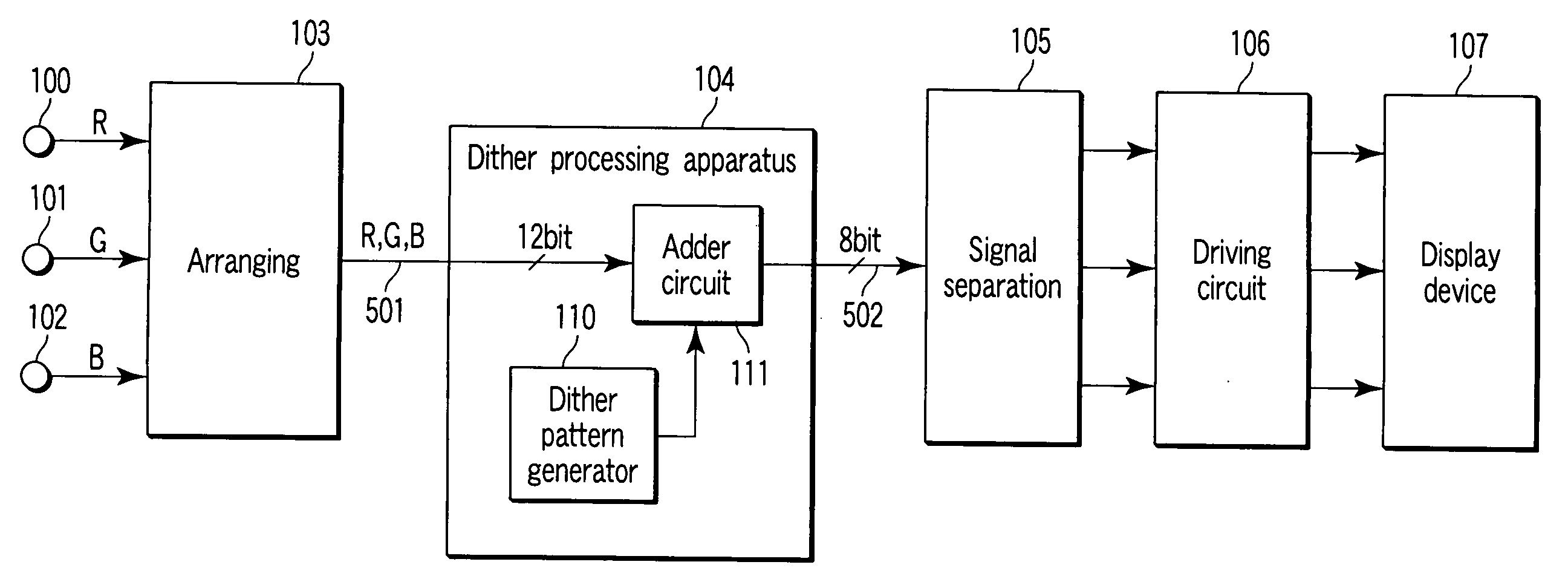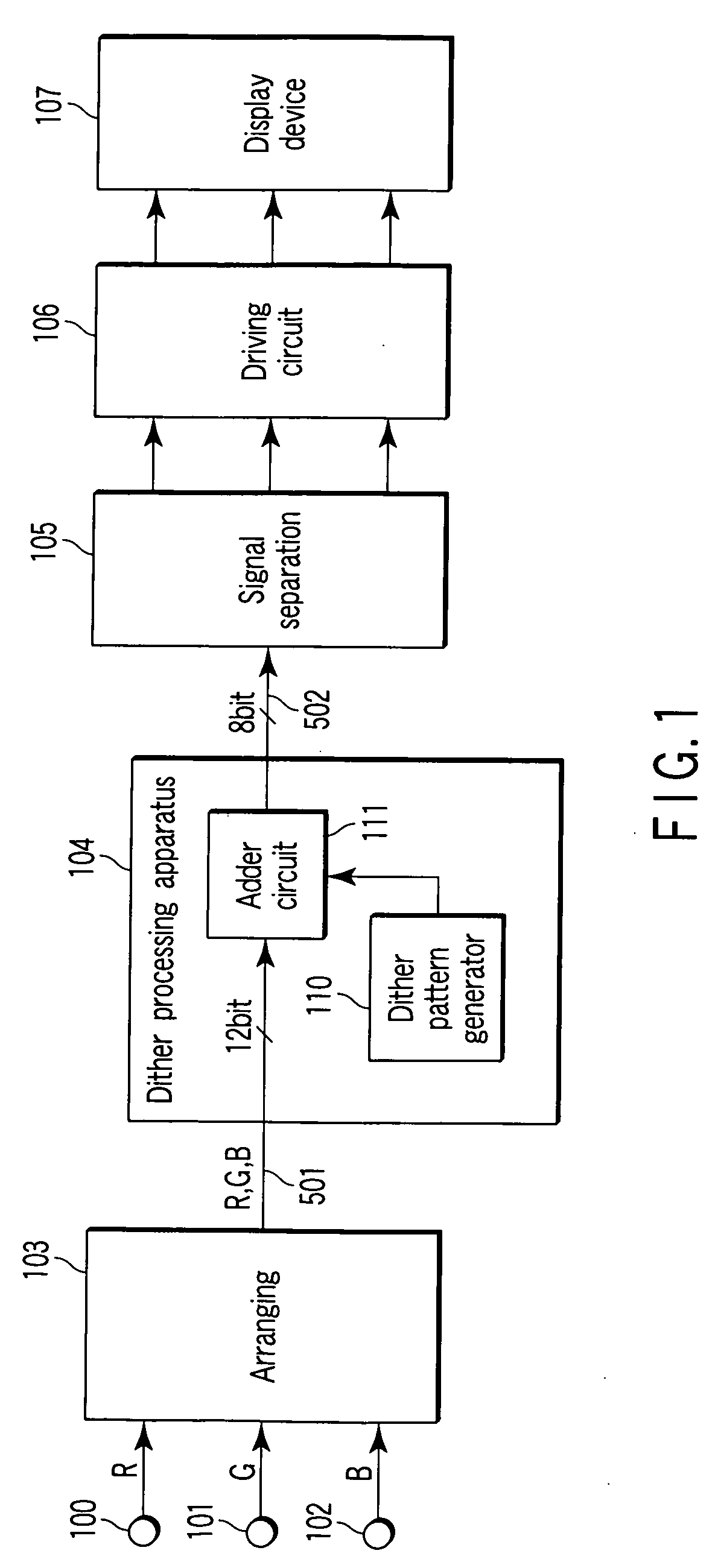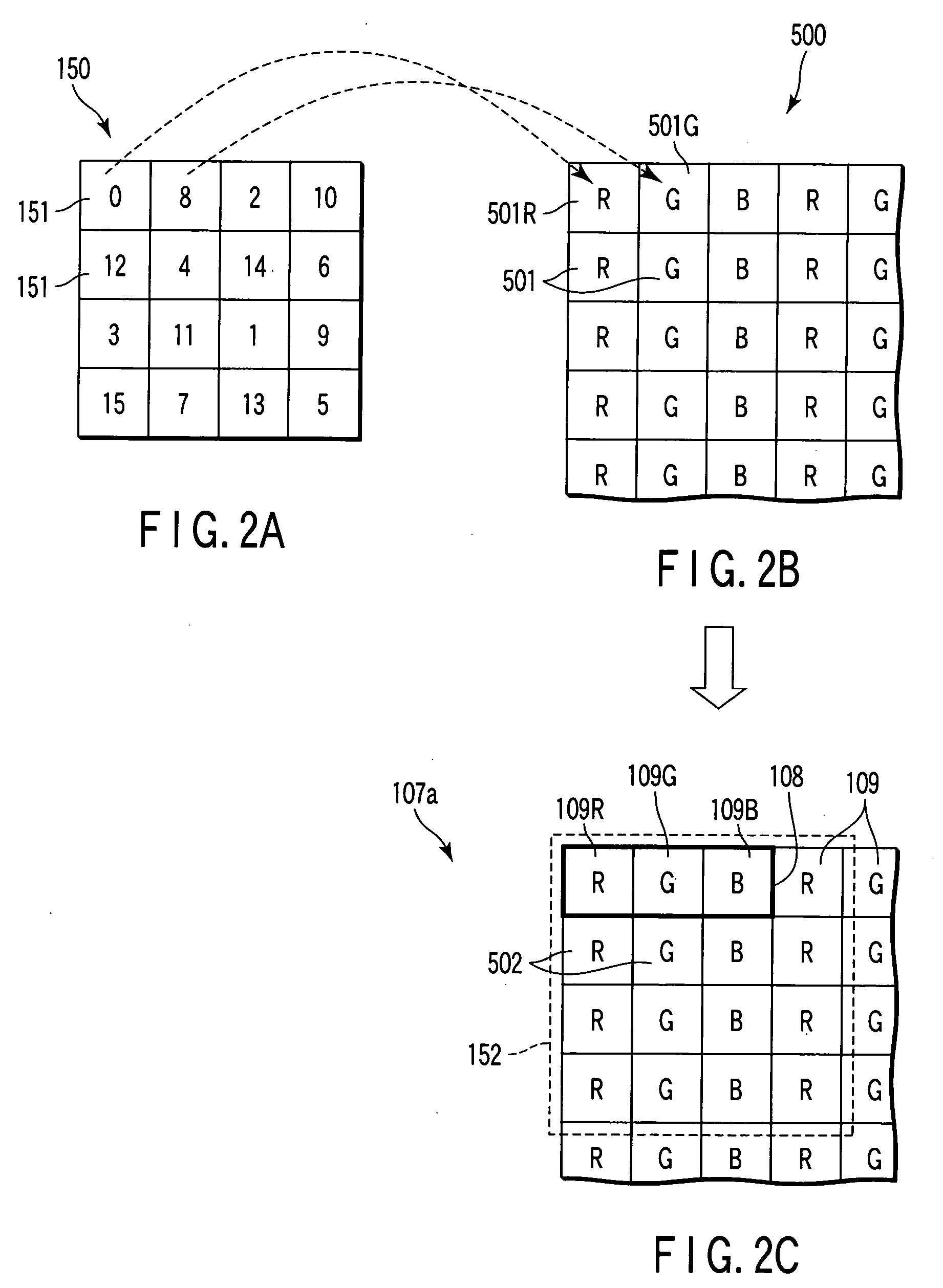Gradation correction apparatus and gradation correction method
a technology of gradation correction and apparatus, applied in the direction of image enhancement, visual presentation, color signal processing circuit, etc., can solve the problems of visual recognition of dither patterns on display screens, limit to the gradation which can be displayed, etc., to achieve the effect of reducing the diffusion range, reducing the performance of halftone processing, and reducing the gradien
- Summary
- Abstract
- Description
- Claims
- Application Information
AI Technical Summary
Benefits of technology
Problems solved by technology
Method used
Image
Examples
first embodiment
[0023]FIG. 1 is a block diagram showing a first embodiment of a gradation correction apparatus according to the present invention.
[0024] Terminals 100 to 102 are signal input parts into which signals of R (red), G (green), and B (blue) to be displayed on a display device are inputted in parallel. The signals of R, G, and B inputted from these terminals are inputted to an arranging circuit 103. The arranging circuit 103 arranges the input three signals into an arrangement which is the same as the arrangement of display elements of a display device 107, and outputs the R, G, and B signals (image data 501) in order. For example, when the display elements of the display device are arranged from the left to the right in the order of R, G, and B . . . , the image data 501 are outputted in the order of R, G, and B . . . in the same way. The image data 501 outputted from the arranging circuit 103 are inputted to a dither processing apparatus 104.
[0025] The dither processing apparatus 104 ...
second embodiment
[0041] A second embodiment of the present invention will be described in FIG. 5. Portions which are the same as those in FIG. 1 are denoted by the same numbers, and descriptions thereof will be omitted.
[0042] In the first embodiment, three signals are arranged, and the processing is carried out with respect to each of the signals in order. However, in the present embodiment, arranging is not carried out, and the three signals are processed simultaneously (in parallel).
[0043] The signals inputted in parallel from terminals 100 to 102 are respectively supplied to input terminals at sides of adder circuits 120 to 122. A dither pattern generator 123 generates dither pattern data. Pattern data outputted from the dither pattern generator 123 are inputted to input terminals at the other sides of the respective adder circuits 120 to 122.
[0044] The pattern data outputted from the dither pattern generator 123 are continuous values on a dither pattern which are different from one another. F...
third embodiment
[0048] A third embodiment is shown in FIG. 6. Components which are the same as those in FIG. 1 are denoted by the same numbers, and description thereof will be omitted.
[0049] The present embodiment is an example in which the present invention is applied to error diffusion processing.
[0050] Image data 501 outputted from an arranging circuit 103 are inputted to an error diffusion processing circuit 130. The error diffusion processing circuit 130 is structured from an adder circuit 131, a bit converter 132, an error detecting circuit 133, and an error distribution circuit 134.
[0051]FIG. 7 is a diagram showing an image frame 510 for explanation of the brief of error diffusion processing. The image frame 510 is structured from input image data 501. Suppose that the arrangement of image data of R, G, and B in the image frame 510 corresponds to the arrangement of display elements 109 of R, G, and B which are formed on a display screen 107a as shown in FIG. 2. In the present example, a c...
PUM
 Login to View More
Login to View More Abstract
Description
Claims
Application Information
 Login to View More
Login to View More - R&D
- Intellectual Property
- Life Sciences
- Materials
- Tech Scout
- Unparalleled Data Quality
- Higher Quality Content
- 60% Fewer Hallucinations
Browse by: Latest US Patents, China's latest patents, Technical Efficacy Thesaurus, Application Domain, Technology Topic, Popular Technical Reports.
© 2025 PatSnap. All rights reserved.Legal|Privacy policy|Modern Slavery Act Transparency Statement|Sitemap|About US| Contact US: help@patsnap.com



